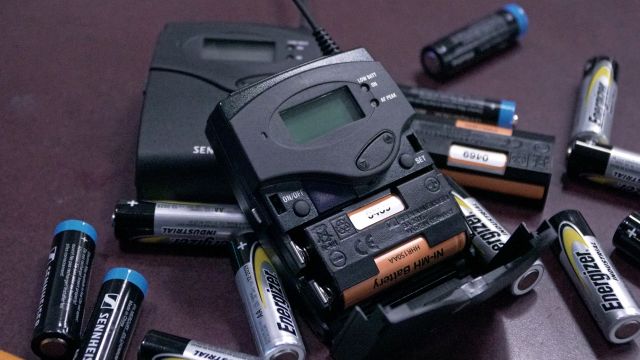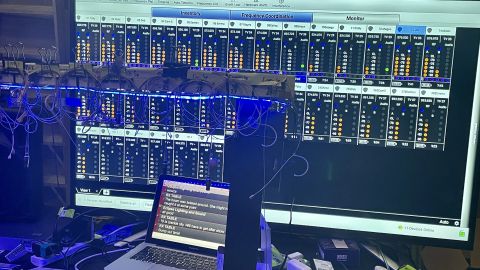Batteries, Maths and Landfill

Artie Jones from Factory Sound estimates that more than a quarter of a million disposable batteries could end up in landfill after being used in productions each year in Australia. He says there is a better alternative.
When it comes to the best way to power your wireless systems - alkaline battery or rechargeable - there are many factors to consider. The saying “Less is More” is the key.
A wireless microphone system that’s used for three performances, then put back in the cupboard until next year, equates with less performances, but more of a risk of battery leakage inside the wireless transmitter.
The risk of battery leakage from a nickel metal hydride (NiMH) rechargeable battery is negligible, even if left inside a device for a prolonged period.
How much landfill is acceptable?
Let’s imagine a typical user of wireless microphones - the annual school production. A small-to-medium sized production, with a handful of shows and a couple of tech rehearsals could consume 140 batteries for a production.
There are around 8000 schools in Australia. If just 15% of these attempt an annual production, 168,000 batteries would be used. Add to that a few end-of-year concerts, and it would be a very conservative estimate of 250,000 batteries heading to landfill annually.
This figure doesn’t include amateur theatre, professional productions, theatre restaurants, nor the thousands of bands that use the same wireless systems and in-ear-monitoring systems.
 Brand-specific rechargeable batteries
Brand-specific rechargeable batteries
If you are the person responsible for wireless microphones, the very first thing you’ll notice is how quickly alkaline (single use) AA batteries disappear. It might be because the AA batteries have been ‘borrowed’ by students and co-workers, as they fit a variety of devices - not just wireless systems.
Generic rechargeable AA batteries offer the ‘double-whammy’ of not only being desirable to the borrower, they also may not deliver the (approximately) 1.2v per cell consistently throughout the charged state.
Once your battery level drops, although the wireless will remain on, the actual RF performance - the quality of the wireless transmission - will suffer greatly, leading to dropouts and possible interference.
The safety net and convenience factor
With single-use Alkaline batteries giving us a landfill concern, and generic rechargeable batteries possibly not performing ‘up to scratch’ (some are better than others), there are great reasons to choose a wireless-specific rechargeable (such as BA2015 for Sennheiser, or SB900A for Shure).
If you load your BA2015 into the Sennheiser bodypack, then drop it into the L2015 charger after the gig, it simply will not over-charge. Similarly, if you put the bodypack into the charger without the correct BA2015 battery in place, it won’t charge. The safety nets are in place to ensure there is no danger of damage.
With a lifecycle of around 1000 discharge / charge cycles, using the correct NiMH rechargeable battery pack in the wireless transmitter, the battery is highly likely to last for the same number of performances as the wireless itself. Because they’re a unique shape, they are unlikely to be borrowed as well.
Smart RF (wireless) technicians keep a spare rechargeable battery for each wireless device, and they will also find a way to document the life of each battery. Get ready to buy another one after around 800 charges.
If all theatres and performance venues around the world approach battery usage the same way, imagine how much less landfill we would contribute each and every year.





